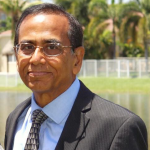
 To avert further impoverishment, fragmentation and conflict throughout the subcontinent, it would be essential for future leaders in Delhi, Dacca and Islamabad to thrust aside present divisions and acrimony and join hands out of necessity in their search for fresh ties and institutions that would enable them to attack overriding common problems in dignity and peace.
To avert further impoverishment, fragmentation and conflict throughout the subcontinent, it would be essential for future leaders in Delhi, Dacca and Islamabad to thrust aside present divisions and acrimony and join hands out of necessity in their search for fresh ties and institutions that would enable them to attack overriding common problems in dignity and peace.
By Nazarul Islam
It was just another winter… not of discontent, but the one after the winter of 1971. I vividly remember, a half-moon smiling dimly in the silhouette of darkness all around the city. And the sweet fragrance of the night-flowering jasmine pervaded the atmosphere.
I can recall my exact location that evening in Dacca. This city had emerged from the chaos that followed the war of liberation.
Impressionistic images of people and places and events have kept moving by in my consciousness. For nearly five decades, these were etched in memory and permanently embossed. All this helped me to understand the depths of time, matter and existence.
That night, I saw no taxis or baby-taxis (auto-rickshaws) or cycle rickshaws on the roads. A sinister silence pervaded our lives. I was walking, fast paced towards the city’s famous racecourse. This vast esplanade was bathed in silvery moonlight. A huge boat-shaped platform erected for Indira Gandhi’s last visit to the capital glistened in solitary splendour with petunia-shaped loudspeakers pointing out on all four sides.
The nation’s founder Bangabandhu Sheikh Mujibur Rahman was due to make his first ‘anniversary of liberation’ speech the following (victory) day. I noticed a few armed policemen guarding the rostrum and I quickly retraced my steps. It was only then that I realized that I had neither met anyone on the road nor heard the usual hustle and bustle, typical sounds of an Asian city.
An occasional truck thundered by and a rickety motor rickshaw, we liked to call ‘scooter’, spluttered on its hurried journey homewards – Nothing more. I felt that I could have been in some remote village: dogs barking in the distance and packs of jackals baying at the moon. But this was Dacca, the new capital of Bangladesh.
I reached the Intercontinental Hotel, located on Mymensingh Road, only to run into my childhood friend, since kindergarten, at the St Francis Xavier’s — Fazlur Rahman (Shamim), a college student (today’s retired business magnate). Strangely though, I also ran into a Bengali journalist who had arrived from Calcutta.
‘Have you been out at this hour of the evening?’ he asked me in a tone of grave horror. ‘My dear brother, you must be careful. In any case, if you must go out after dark, be sure to leave your money and your watch somewhere else.’
Nonsense! I snapped in exuberance and quickly returned to the crowded lobby. I recalled my earlier visit to this doyen of a hotel that was entrenched in the birth of Bangladesh, nearly 11 months ago.
The airport had been in ruins: deep craters adorned the runway; charred skeletons of Indian and Pakistani fighter planes, broken glass reflecting the sun’s ray during the day. What had been the Pakistan Air Force mess hall was transformed into a heap of rubble in which some airmen had reportedly been buried.
Nearly a year after the independence of Bangladesh, the airport seemed to be in a good shape. The buildings were repaired. There was little trace of damage anywhere.
I also recalled the vengeful mood of the citizens only a year ago. The shuttered shops of the non-Bengalis, who spoke a different language — people, who were called the Biharis, sided with the Pakistanis; the barbed-wire encampment behind which they lived in terror of reprisals; the bayoneting of four ‘Ansar’ collaborators. Bangladeshis were also angry with the Chinese and the Americans and exhibited their passions.
Chinese restaurants were closed. Slogans condemning the United States for sending its Seventh Fleet into the Bay of Bengal were plastered on many walls.
I also recalled the scenes of jubilation. In the markets, people shook their hands, embraced each other and rejoiced. Street children shouted, ‘Joy Bangla (Victory to Bangladesh)’ and ‘Joy Hind (Victory to India)’. It must have been great for any Indian to be in Dacca during those historic and festive early years of Bangladesh.
The naked reality stared boldly to mock all those present — truly the newly independent Bangladesh had been in shambles. Its roads and railways were out of commission because most of the bridges had been blown up. The nascent country’s vital river transport system almost stood at a standstill because a large number of ferry boats and steamers had been sunken by occupant, enemy forces. And then, there was the scarcity of food that had bothered all because standing crops had been burnt.
Reportedly, three million men are said to have been butchered in cold blood. And nearly 10 million had been forced to seek refuge across the borders into India. At least, 300000 women had been ravished and many of them left pregnant. I recalled all this but also saw hope in the eyes of Bengalis — something that naturally emerged as soon as Bangabandhu (friend of Bengal) Sheikh Mujibur Rahman returned from his confinement in Pakistan. Soon, it seemed all would be well in Bangladesh.
I remember suddenly to have been awakened by the muezzin’s loud call for prayers. The previous year, I could not hear it once during the bedlam of war. Perhaps that day, there were too many Sikh and Hindu soldiers in the vicinity of the independent land which rendered it to be safe for Muslims, who had wished to proclaim the glory of Allah. Now mosques were fixed with PA systems. At 5:30am, while it was still pitch dark, the faithful responded and joined together after similar calls to prayers had flowed around from a thousand minarets.
An hour later, an acquaintance offered me tea, biscuits and a copy of the Bangladesh Observer. ‘Good morning, young man!’, he greeted me in English. I replied ‘Joy Bangla.’ He looked embarrassed. ‘Don’t you say Joy Bangla anymore?’ I had asked him. ‘How can I say Joy when I have to pay twice as much for rice and fish, four times as much for clothes? I used to smoke 10 cigarettes a day; I haven’t smoked one in the past 10 days.’ Before I could ask him why, he was gone.
In the nascent years of the nation, the big question that bothered many economists and political analysts, both within and outside the government, was just how much money and effort would it take to build a new nation from scratch and to keep it afloat and moving.
By this, the proud Bangladeshis meant: how much money and material would India be requiring to pump into the new country of Bangladesh, the nation that India’s brave leader Indira Gandhi helped to create in her war against Pakistan?
It was just one question that Prime Minister Indira Gandhi was known to have pondered long and hard and this was something which Sheikh Mujibur Rahman, the prime minister of Bangladesh, had been so deeply concerned about. The economics of one country, India, would directly impact the politics of Bangladesh, a new neighbor that was created through a bloody war.
According to figures which were released by the Indian government, the cost of supporting and sustaining the 9.0 million or so East Pakistani refugees who came over during the months of March to November the year before was more than $700 million, of which about $250 million was to be contributed by foreign governments.
Finance ministry officials in India pointed out that in order to make Bangladesh’s economy viable, India would have to pour nearly $2.9 billion annually into Dacca’s deep pockets for the coming five years at least.
Already, the Indian economy had begun to feel the strain of having to support a foreign economy. In order to meet the budgetary deficit of $700 million caused by the influx of the refugees, India Gandhi’s government levied $91 million in new taxes only the previous November on the people of India. All told, new taxes and levies were expected to fetch in an additional $568 million that financial year and about 60 per cent of which would be diverted to the newly established ally, Bangladesh.
This beautiful country, with an area of 143,000 square miles, ranked among one of the world’s most densely populated nations — a total of 75 million people and a per capita income of about $24. Rice and jute constituted the country’s principal crops. Of 35.3 million cultivable acres, 22.4 million, or roughly 63 per cent, were cultivated before the war. But Indian government officials iterated that fewer than 6.0 million acres could possibly be readied for cultivation that year. Roads, bridges, houses and airports suffered the greatest devastation during the war of liberation.
In that fateful year of 1973, Bangladesh enjoyed no internal security. According to a survey made by Indian army officials, between December 1972 and April the next year, 700,000 tons of bricks, 100,000 tons of steel rods and nearly 30,000 tons of heavy steel material were estimated to be needed to restore Bangladesh, at least to bring the conditions in the new country at par with situation that had existed in the fateful month of March 1971.
India was hoping that it would not have to bear the burden of reconstruction alone because the Indian economy possibly could not sustain an additional burden in the shape of the economy of Bangladesh any longer.
However, the economic problems created definite spinoffs, leading to some serious political problems. One important point had obviously been under consideration: how long would leaders of Bangladesh continue or want to continue receiving massive doses of aid from India, a country which some time ago in the past, was its bitter enemy when the new country of Bangladesh had been the eastern province of Pakistan and that day in time had to bear with the problems that undoubtedly arose from being economically dependent too much on India.
Also, the question arose: how long would political opponents of Indira Gandhi, notably the right-wing Jan Sangh Party, tolerate a situation where in effect the vitally needed resources were being channeled into supporting a foreign neighboring country?
And the crucial point was that for the moment, at least, there seemed to be no way out of the tunnel of a long-term economic commitment made by the worthy Indira Gandhi to Bangladesh.
The political stability of the new country depended directly on how well the country was restored economically.
If widespread hunger and poverty had been allowed to persist, extremist factions would have been bound to gain popularity, thereby undermining the power and control of the Mujib government. If that happened, chaos and anarchy were likely to set in and there could be a new outbreak of greater subversion. Under such extreme circumstances, would the nascent Bangladesh army take over the reins to restore law, order and control of the nation?
Indira Gandhi hoped at that point if at that time in the history of Bangladesh, when its survival had been under question, such nations as Britain, France and the Soviet Union, which had remained largely neutral or supported India during the war, would most likely take the initiative and come forth with large chunks of economic assistance for Bangladesh. That hope was the source of the independent nation’s trial and tribulations.
‘The scenario would be something like a doctor who had helped a woman give birth and then was entrusted with the task of taking proper care for the infant.’ I clearly remember how an Indian official sardonically remarked. Perhaps, that was the ominous way nations were born and nurtured while a cluster of other, large and powerful nations only needed to put their acts together and play ‘god, the great saviour’ in order to ensure the survival of a small and proud nation of Bangladeshis.
India’s support for full Bengali independence may have been made inescapable by the incredibly short-sighted and brutal policies of General Yahya Khan’s military government. But certainly no one, particularly the Indians, could have ignored the approaching dangers and problems that would erupt with the birth of Bangladesh.
Most likely, it was conjectured that the success of secession in East Bengal would touch off a chain reaction of separatist demands throughout the subcontinent in India as well as Pakistan. Kashmir inevitably would, in future become the bone of contention in India. And the secession of the eastern wing of Pakistan would provoke the people of Balochistan to follow the path of autonomy and self-respect.
Desperately poor and heavily overpopulated, then existing population of 75 million was expected to double in 20 years when the country of Bangladesh would perhaps become a breeding ground for domestic unrest and also a lightning rod for foreign meddling. There were deep apprehensions that it could also become a magnet for the Bengalis of India and a destructive influence on the delicate structure of Indian unity.
To avert further impoverishment, fragmentation and conflict throughout the subcontinent, it would be essential for future leaders in Delhi, Dacca and Islamabad to thrust aside present divisions and acrimony and join hands out of necessity in their search for fresh ties and institutions that would enable them to attack overriding common problems in dignity and peace.
As an emerging dominant power, India then assumed special responsibility in future to assert the moral leadership for reconciliation that had been so sadly lacking during the war of liberation. And Mother India would step out of the way to assist and extend favour whenever Bangladesh would be forced to march on a new path of trials.
It is never winter in the land of hope.
________________________
About the Author
